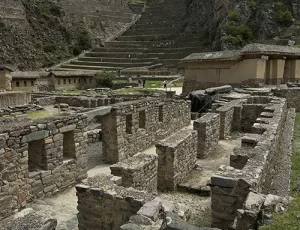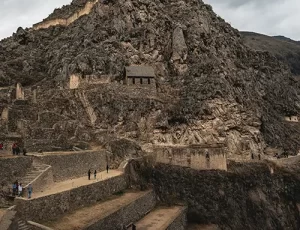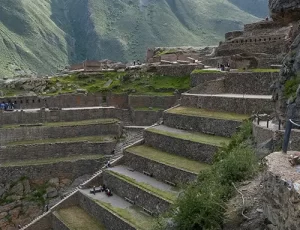Ollantaytambo: A Complete Visitor’s Guide to the Last Inca Stronghold
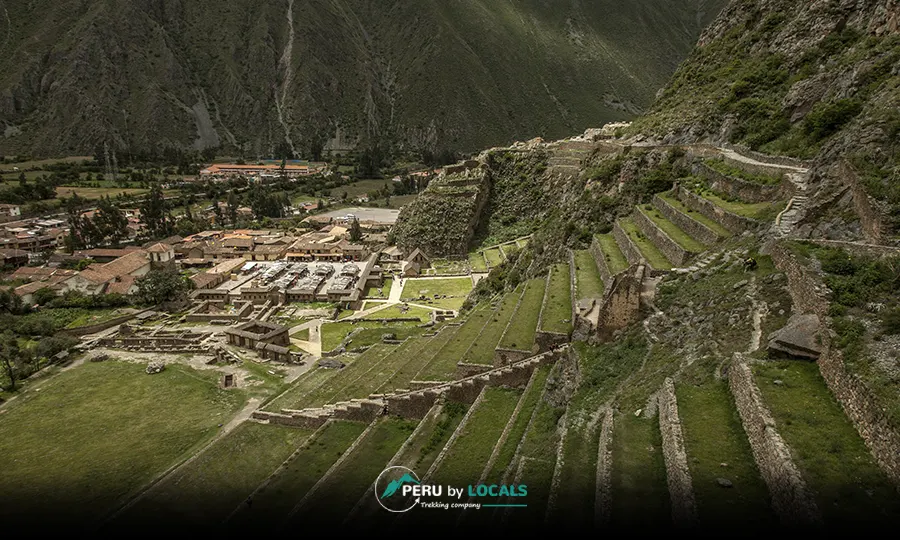
Ollantaytambo
Ollantaytambo, located in the Sacred Valley of Peru, is a hidden gem that not only serves as a key stop for visitors heading to Machu Picchu, but also offers a deep dive into the rich history of the Inca Empire. As part of our Sacred Valley Tour, Peru by Locals invites you to explore Ollantaytambo’s rich heritage, spectacular ruins, and vibrant local culture.
Overview of Ollantaytambo
Ollantaytambo is situated 60 kilometers northwest of Cusco, perched at an altitude of 2,792 meters above sea level. Known as a crucial agricultural, military, and religious hub for the Incas, Ollantaytambo features incredible stonework and remains of temples, fortresses, and terraces. Today, the town continues to thrive, with its residents preserving the Inca architectural style. The village is also the last stop before reaching Machu Picchu by train, making it an essential point of interest for tourists.
History and Origin of Ollantaytambo
The name “Ollantaytambo” originates from the Aymara language, meaning “Place to Look Down,” referring to its position above the valley. This settlement dates back to pre-Inca times, where the Aymaras first established a citadel. When the Incas arrived, they strengthened the site, turning it into a military and ceremonial center. Under the rule of Pachacutec Inca, Ollantaytambo became one of the most important sites in the Sacred Valley.
In 1537, after losing Cusco to the Spanish, Manco Inca and his forces retreated to Ollantaytambo, where they famously defeated the Spanish invaders. However, realizing the imminent reinforcements from Cusco, the Incas abandoned the site and retreated into the jungle. This moment remains a key chapter in the history of the Inca Empire and the Spanish conquest of Peru.
What to See in Ollantaytambo
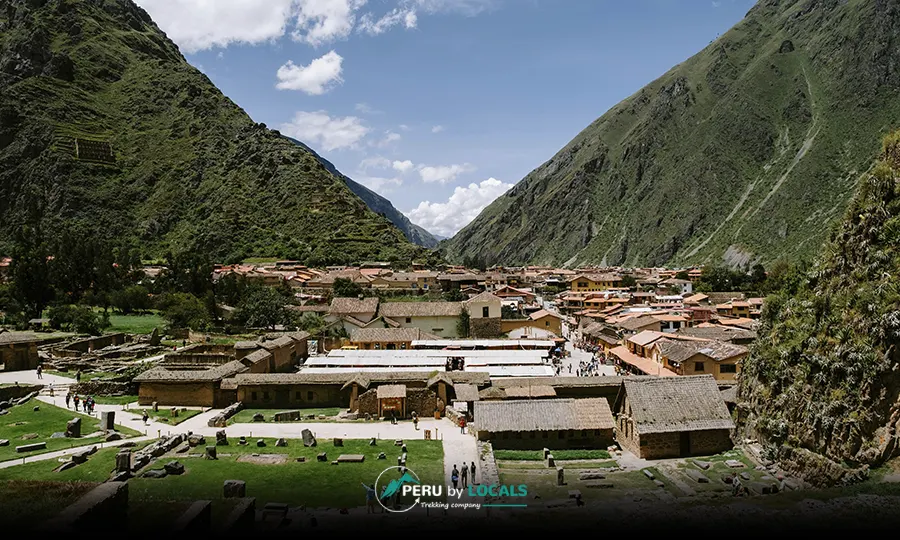
Ollantaytambo
Ollantaytambo is home to several must-visit archaeological sites that offer a glimpse into the ingenuity of the Inca civilization. Below are the top attractions you should not miss:
- The Sun Temple: The most iconic feature of Ollantaytambo, located at the top of the hill. Visitors must climb 200 steps to reach the temple, where six colossal stone blocks, some unfinished, create the structure. The Chacana symbol, an Andean cross, is also featured here.
- Main Gate and Temple of 10 Niches: This area is often featured in postcards and represents the grandeur of Ollantaytambo’s fortifications. The Main Gate leads to a wall with 10 well-carved niches, which was severely damaged during the Spanish battle.
- Ñusta Bath: Also known as the “Bath of the Ñusta,” this beautiful water font was used for religious and ceremonial purposes, reflecting the Incas’ advanced hydraulic engineering.
- Cachicata Stone Quarry: Located across the Vilcanota River, this quarry provided the massive stones used to build the Inca fortress. The hike along the old quarry path offers stunning views of the Sacred Valley.
- Pinkuylluna Qolqas: A series of Inca storage structures built on the side of a hill, where the Incas stored food and grains like corn and wheat. The hike to Pinkuylluna takes about an hour, offering panoramic views of the Ollantaytambo ruins and the valley.
Best Time to Visit Ollantaytambo
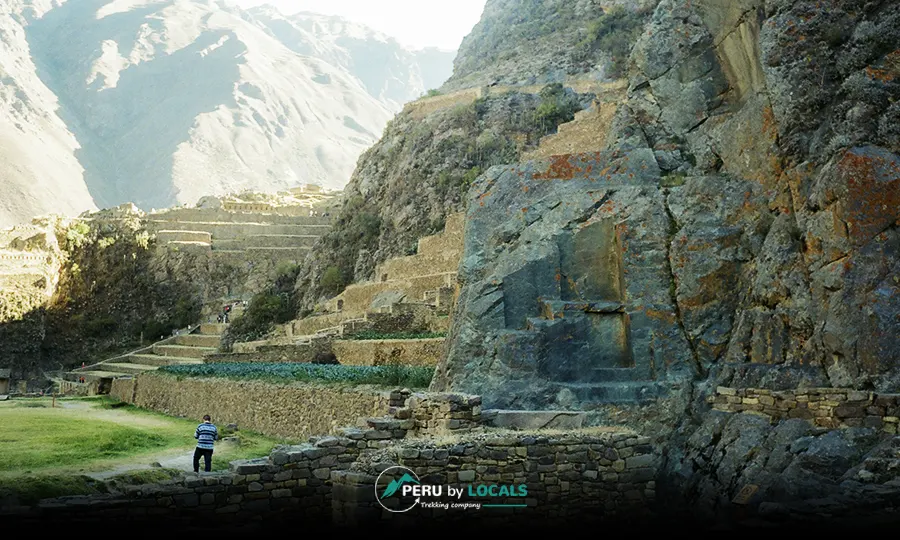
Visit Ollantaytambo
The ideal time to visit Ollantaytambo is during the dry season, which runs from April to November. During this time, you can enjoy clear skies and pleasant temperatures. The rainy season, from December to March, sees more precipitation, which can affect transportation and trails, but the site remains equally beautiful in the rain. The months of May and June are particularly lively due to local festivals such as the Señor de Choquekillka festival, which features traditional dances, music, and costumes.
How to Get to Ollantaytambo
Getting to Ollantaytambo from Cusco is relatively easy. You can take a bus or shared taxi from Cusco’s central bus station or use a taxi service, which costs approximately 50-100 Soles ($15-$30 USD). The journey takes about 1.5 to 2 hours. The town is also well-connected by train to Machu Picchu, with trains departing from Ollantaytambo to Aguas Calientes, the gateway to Machu Picchu.
Entrance Fees
The entrance to Ollantaytambo’s archaeological site is included in the Boleto Turístico del Cusco (BTC), which is required to visit several key sites in the region. The full BTC costs 130 Soles ($35 USD) and includes access to various museums and archaeological parks. Alternatively, a partial ticket for the Sacred Valley, which includes Ollantaytambo, costs 70 Soles ($19 USD). Tickets can be purchased in Cusco or at the site itself. Please note that the site only accepts cash payments.
Where to Stay in Ollantaytambo
There are numerous accommodation options in Ollantaytambo, ranging from budget hostels to mid-range hotels. For those seeking a more immersive experience, consider staying at Earth Tones, a unique set of tiny homes located just a short walk from the town center. For larger groups, Tunupa Hotel, close to the train station, offers ample space and comfort. For a more luxurious stay, El Albergue is a top choice, offering easy access to the train station and incredible views of the surrounding mountains.
Peru by Locals’ Recommendations
If you are planning a visit to Ollantaytambo, make sure to take your time exploring its rich history and unique features. Peru by Locals can help you arrange a guided tour to make the most of your visit, ensuring you don’t miss any of the fascinating archaeological sites, and allowing you to experience the beauty of Ollantaytambo and the Sacred Valley. Whether you are on your way to Machu Picchu or simply immersing yourself in Inca history, Ollantaytambo should be a top priority in your itinerary.
Conclusion: Ollantaytambo – A Must-Visit Inca Wonder
Ollantaytambo is more than just a stopover for Machu Picchu travelers; it is a living testament to the ingenuity of the Inca civilization. From its perfectly preserved ruins to its charming cobbled streets, this town offers an authentic Andean experience. Whether you’re fascinated by its history, architecture, or natural beauty, Ollantaytambo is sure to leave a lasting impression.
We hope this guide helps you plan your trip to Ollantaytambo. Peru by Locals is here to ensure that your visit to this incredible destination is as enriching and unforgettable as possible!

